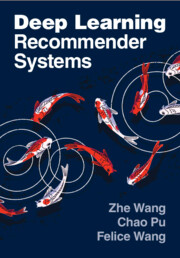Book contents
- Deep Learning Recommender Systems
- Reviews
- Deep Learning Recommender Systems
- Copyright page
- Contents
- Foreword
- Preface
- 1 Growth Engine of the Internet
- 2 Pre-Deep Learning Era
- 3 Top of the Tide
- 4 Application of Embedding Technology in Recommender Systems
- 5 Recommender Systems from Multiple Perspectives
- 6 Engineering Implementations in Deep Learning Recommender Systems
- 7 Evaluation in Recommender Systems
- 8 Frontier Practice of Deep Learning Recommender Systems
- 9 Build Your Own Recommender Systems Knowledge Framework
- Afterword
- References
7 - Evaluation in Recommender Systems
Published online by Cambridge University Press: 08 May 2025
- Deep Learning Recommender Systems
- Reviews
- Deep Learning Recommender Systems
- Copyright page
- Contents
- Foreword
- Preface
- 1 Growth Engine of the Internet
- 2 Pre-Deep Learning Era
- 3 Top of the Tide
- 4 Application of Embedding Technology in Recommender Systems
- 5 Recommender Systems from Multiple Perspectives
- 6 Engineering Implementations in Deep Learning Recommender Systems
- 7 Evaluation in Recommender Systems
- 8 Frontier Practice of Deep Learning Recommender Systems
- 9 Build Your Own Recommender Systems Knowledge Framework
- Afterword
- References
Summary
This chapter examines the critical role of evaluation within the framework of recommender systems, highlighting its significance alongside system construction. We identify three key aspects of evaluation: the impact of metrics on optimization quality, the collaborative nature of evaluation efforts across teams, and the alignment of chosen metrics with organizational goals. Our discussion spans a comprehensive range of evaluation techniques, from offline methods to online experiments. We explore offline evaluation methods and metrics, offline simulation through replay, online A/B testing, and fast online evaluation via interleaving. Ultimately, we propose a multilayer evaluation architecture that integrates these diverse methods to enhance the scientific rigor and efficiency of recommender system assessments.
Keywords
Information
- Type
- Chapter
- Information
- Deep Learning Recommender Systems , pp. 225 - 247Publisher: Cambridge University PressPrint publication year: 2025
